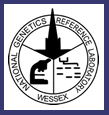
_
|
|
|||||||||||||||||||||||
|
Comparative
Sequence Analysis
|
||||||||||||||||||||||||
|
Project leader: Chris Mattocks Comparative Sequence Analysis (CSA) is a simple method for directly
comparing base-lined raw data from equivalent sequencing reactions
on different samples without the need for base calling. The control
sequence electropherogram is split into its four component traces
(one for each base), which are overlaid with equivalent traces
from a second reaction. The resulting format allows simple and
rapid visualisation of any differences (mutations) between the
two sets of traces. Because the assay is based on sequencing, mutations
can be characterised as well as identified. Moreover, because there
has been minimal software manipulation of the data, heterozygous
mutations that are difficult to pick up using standard sequencing
analysis techniques have been shown to be easily detectable in
a single direction using CSA. Finally, and perhaps most importantly
from a diagnostic point of view, CSA is a simple and rapid technique
for verifying normal sequence data with a very high degree of confidence. In addition to dissemination information about manual CSA we are currently working in collaboration with the Cancer Genome Project at the Welcome Trust Sanger Institute (Hinxton, Cambridge) to develop robust and simple to use software to automate CSA. This software will be available for trial evaluation in UKGTN laboratories in the near future.
|
||||||||||||||||||||||||
Last Updated: 21 July, 2008 by G. Watkins. |
||||||||||||||||||||||||
